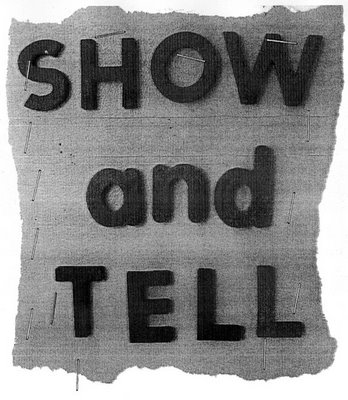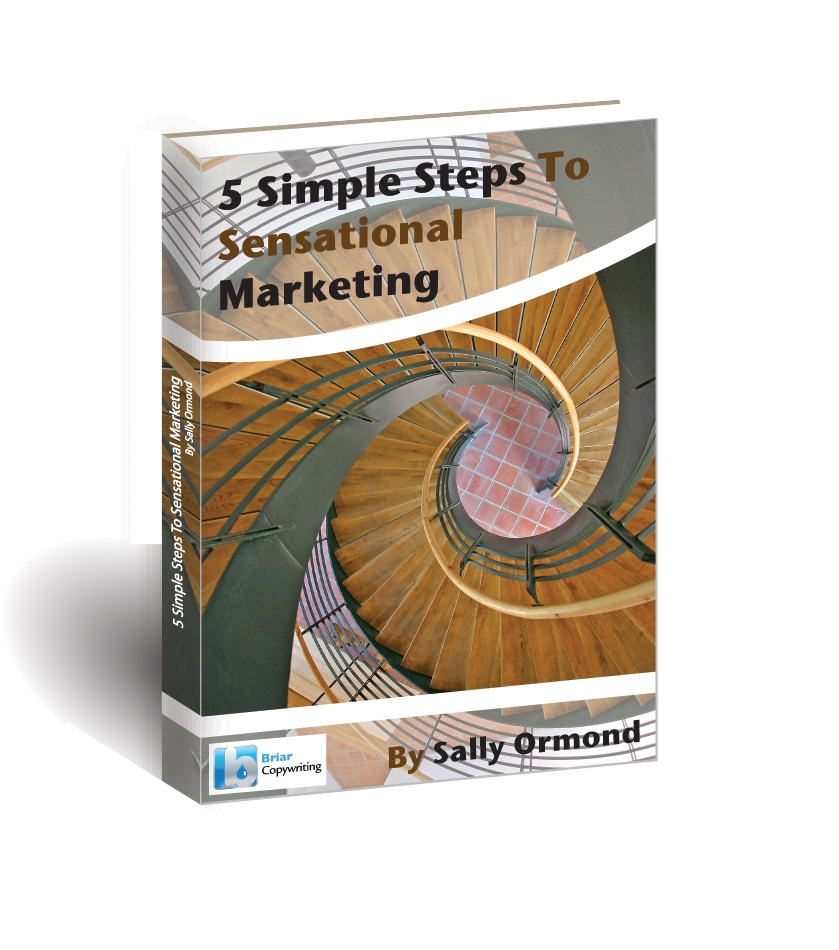Entries Tagged 'freelance copywriting' ↓
October 5th, 2009 — copywriting, freelance copywriting
If you think about it, just about everything can be sold – products, services, information, the possibilities are endless. Therefore you would assume that the range of different types of copy must be staggering.
But if you look a bit deeper you’ll realised that essentially there are 3 types of copy that fulfil just about every possible use:
- Copy that sells to your reader
- Copy that attracts customers
- Copy that builds relationships and gets to know them
Of course, copy isn’t necessarily just there to fulfil one of the above requirements, it could (and usually does) exist to perform a combination of them.
Copy that sells
You would think all copy sells, but as this blog will explain that isn’t always necessarily the case. The main formats that require copy crafted to sell are:
- Direct mail
- Direct email
- Advertisements that contain a direct response option (i.e. “Order now and your kettle for 5 easy payments of £10)
- Ecommerce websites – i.e. those with ordering capabilities so the buying decisions can me made there and then and acted upon.
All of these are designed to get an immediate sale. They are designed to get people to make a snap decision so you’ll find that frequently they contain a limited offer of sorts – limited by time, the number available or price (whereby a special offer is only available until a certain date).
Copy that attracts customers
In this case your copy should be designed to generate a different reaction. Here you don’t need to make a sale immediately. Instead your writing should lay the first foundation stone towards making the sale.
You see, you won’t always have the option to make a sale immediately. Think about the types of sales copy you have seen. Much of it exists to raise awareness to a website, shop or something along those lines. Therefore your copy should arouse interest sufficiently to make your reader want to learn more about your product or service. It will direct them to a website or shop.
So where will you see this type of copy used?
- Print advertising
- TV or radio advertisements
- Email – newsletters, ezines, email offers
Copy that builds relationships and gets to know your reader
You could easily argue that sales are all about relationship building because, ideally, you want your customer to return to you again and again.
But there are certain products and services that will require a certain amount of customer wooing before they will commit to buy. These could be expensive services, long term services or products that will require the approval of several decision makers before a sale can be made.
Copy here obviously has to be there for the long haul. This isn’t a sprint to a sale; this method is more like running a marathon. You’ve got to build credibility and educate your readers as to why your product or service is for them.
Therefore much of what you write here is going to be informative than a hard sell. You have to pick away at them building the image of your product or service in their minds until they come to the right decision – i.e. that they want to buy it.
So what formats does this type of selling take?
- Press releases
- Articles (print or online)
- Brochures
- Leaflets
- White papers
Now are you beginning to see how versatile the world of the freelance copywriter is?
Sales copy isn’t just about making a sale. Many people don’t like to think they are being sold something – I know I don’t. If someone goes in for the hard sell I will just switch off. However if someone can prove to me that their product or service will benefit my life in some way, I am more likely to listen.
So, next time you sit down to write some sales copy think about what you are trying to achieve with it.
October 1st, 2009 — copywriting, freelance copywriting, marketing

Adjectives and adverbs – they have their place but not in your sales copy.
When writing to sell, be to the point, clear and precise. Littering your copy with qualifiers detracts from your message. They will turn an excellent piece of copy into a lame, unexplosive whimper.
To make an impact your copy should be littered with high impact verbs – powerful language that will make your reader sit up and take notice. This isn’t always easy to attain and may take several drafts before you are anywhere near close.
Ali Hale has written a great post about these vampire words sucking the life out of your writing on Copyblogger. If you want your writing to stand out and be noticed grab that garlic and stake and banish the little critters from your headlines and body text.
September 30th, 2009 — copywriting, copywriting tips, freelance copywriting

That isn’t one of those deep, meaningful and thought-provoking questions such as ‘What is the meaning of life’, but a question that everyone should ask before putting pen to paper or finger to key.
Everything you write should have a purpose. If it doesn’t it’s a waste of time.
You should think of every piece of copy (whether it’s an advert, web copy, newsletter etc) as an agent of action. It’s not static, it’s not transient, it is a there to generate something – a sale, build leads, stimulate interest…
If you are putting time and effort (and quite possibly money if you are using a professional copywriter) into generating a piece of information you must make sure it does something.
Before writing anything, ask yourself these two questions:
- 1. What will this do for my business?
Not every piece of copy will close a sale, but all of it should have a purpose. If, from the outset, you can’t define its purpose it is probably a waste of time and money.
- 2. What do I want my reader to do?
You’ll probably be shouting ‘buy my product’. But it may not always be the response you want. You may just be looking for them to make contact, sign up for a newsletter etc. But whatever it is, your copy must be persuasive enough for them to take the desired action and, possibly, be open to further steps in the future.
Remember even if you are writing an information piece (i.e. white paper or case study) it should still open the door for future business. By producing interesting articles you are paving the way for potential sales.
Every piece of writing your company produces is a budding sales opportunity. Every word helps you build a relationship with your reader. It may not lead to a sale immediately but in time…who knows.
September 29th, 2009 — copywriting, freelance copywriting, website copywriting

Some copywriters will specialise in a certain industry or field of writing. Others offer copywriting services that cover just about every aspect of sales and business writing you can think of.
Many copywriting projects begin with a desire to tell an audience about a product, service or idea. But if all you do is tell your readers about something, you are missing the mark. Telling is done by journalists and teachers. Copywriting is about giving much more value.
It should sell not tell
Your message – whether it is an advert, website copy, brochure or email – should persuade and motivate your reader to carry out a particular action – BUY NOW, CALL NOW, BOOK NOW.
Below are three crucial elements that distinguish between writing to tell and writing to sell:
- Benefits
This is one thing you must become completely fixated on – because it’s what your readers want to know about. By highlighting the benefits you are appealing to your audience’s self interests. Why? Because benefits provide motivation.
- Make offers
To make a sale you need to make a deal and this is your offer. Whether it is BOGOF, a time limited offer or a limited edition bonus gift they all add weight to your sales campaign.
- See if from your customer’s point of view
This is where you leave your ego at the door. If you want to build rapport you have to write from their point of view. Suspend your own opinions and only think about what you are promoting from your reader’s side of the fence.
There are many other factors that need to be taken into consideration but the three elements described above are crucial if your writing is to sell rather than tell.
For more information about writing to sell, download Sally Ormond’s free eBook – 5 Simple Steps to Sensational Marketing.
September 24th, 2009 — copywriting, copywriting tips, freelance copywriting
There is a subtle difference between good copywriting and great copywriting: 
Good copywriting will:
- get feedback from your audience
- it may educate them therefore adding value
- it may entertain them
- it will hopefully be interesting to them
But great copywriting will:
This very point has been made (very eloquently) by Michael Fortin. He mentions there are 3 main factors you need to make your copy sell. They are not new or revolutionary, but fundamental to copywriters everywhere – but sadly, so often forgotten about.
State the benefits
The benefits must be distinguished from the features of your product. The benefits are to do with the personal effect the product will have on your reader. Think about what it will do for them, how it will make their life easier.
Tell them a story
Are you sitting comfortably…
A story is a great way to make your copywriting relevant to your reader. If it is relevant to them, it is easier to relate to. If it is easier to relate to, they are more likely to see the benefits and buy.
Don’t worry if you think that including a story is going to make your sales pitch too long – if it is interesting and relevant, they’ll read it.
Don’t let them think for themselves
The decision to buy tends to be an emotional one which is later justified by logic. So whatever you do, don’t let your reader think for themselves. Spell it out to them – tell them why its a valuable offer. Don’t leave it for them to figure it out for themselves – be clear, be direct and never leave them with any doubts.
You can read Michael’s full article here – it’s a great read.









